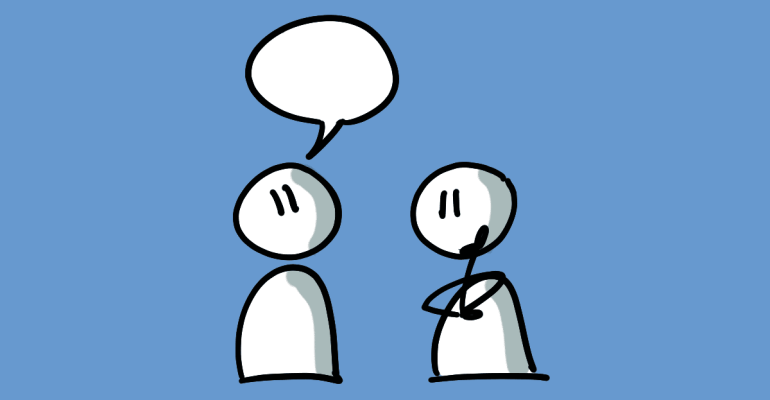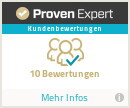5 Tips to Improve Your Critical Thinking Skills
12. August 2022 2023-09-28 11:275 Tips to Improve Your Critical Thinking Skills
Critical thinking is increasingly essential in our everyday lives and at the workplace. We are confronted with fake news, deep fakes, information overload, and the fact that new information is available every millisecond. Thus, there is a high demand for the ability to evaluate all this data reflectively. But are we doing that in a good way, given our limited time and resources?
How can we improve our critical thinking skills, and how is this important when working with data from UX research?
What is critical thinking?
There are a lot of different definitions of critical thinking out there. Some are interchangeable, some overlap, and some are not compatible. The Foundation for Critical Thinking – based in California, the US – defines critical thinking as follows: „Critical thinking is that mode of thinking — about any subject, content, or problem — in which the thinker improves the quality of his or her thinking by skillfully analyzing, assessing, and reconstructing it.“ (n.d.).
Robert H. Ellis describes it like this: „Critical thinking is reasonable and reflective thinking focused on deciding what to believe or do.“ (Ellis, 2011).
A slightly different definition might be: critical thinking is the ability to distinguish between different positions and ideas, question them critically – not only those of others but also your own – eliminate the poor ones and decide on the most reasonable one. This also includes identifying different perspectives when being presented with a single fact or piece of information.
With these three definitions, I think the most important aspects are covered. It is also important to note that critical thinking is only one form of thinking, and nobody thinks critically 100% of the time – that would be impossible.
Why is critical thinking important?
To separate true from false and vital from trivial information, we need to be able to think critically. In everyday life, as well as at work, we have to make decisions that are based on the information that we have. Those decisions affect the quality of our lives – or our work. Thus, it is crucial to look at the data objectively and without bias.
Simply put, critical thinking helps you make better decisions. In some professions, by the way, this is an absolute prerequisite.
What happens without critical thinking?
Without investing in critical thinking – taking the time and effort to do it – we are very vulnerable to being misled by external and intrinsical factors.
As already said, critical thinking is only one form of thinking. Another form is habitual thinking – also referred to as automatic thinking. This form involves those thought processes that happen without any cognitive intervention. Riding a bike and eating soup fall in this category, as well as the assumptions you make about a situation or thing.
In this form of thinking, heuristics – mental shortcuts for simplifying decision-making – are used. Those are prone to different biases, false-framing effects and common fallacies. Confirmation bias is one example of what can happen: information is selected, identified, and interpreted in a way that one’s own expectations are met. In other words, we tend to only consider the information that confirms what we already know. It is crucial to say that we don’t do this on purpose but entirely unconsciously.
How to improve critical thinking skills
Now that we know critical thinking and its importance, what can we do to improve it? Here are some tips.
1. Active listening
Use active listening as a technique. This way, you will be more concentrated and better able to comprehend and remember the things you hear. What is being said and why? What is the condition or emotional state of the person you are listening to? What is the context in which the statements are made?
This is also a crucial skill when conducting interviews in UX research. Regardless of who you are interviewing – e.g. stakeholder or user – it is essential to be attentive, empathetic, observing and following up.
2. Change of perspective
Make sure to continuously explore and incorporate other perspectives. The solution or explanation that first comes to your mind or someone else has uttered is possibly not the only one. This also means that it is maybe not the soundest one. Try to think outside the box and put yourself in the shoes of others (empathy) to consider as many interpretations as possible.
3. Scrutiny and scepticism
I don’t expect you to question everything and everyone in the future. But don’t take everything you hear and see for granted, either! Develop a healthy form of scepticism in everyday life and question what you see, read and hear. Also, question your own reactions, heuristics, and the shortcuts your brain tries to take and be aware of your mental processes.
4. Reliable sources of information
Try to ensure that the information you get comes from a reliable source. What is that, or how do you guarantee that?
First, you should prefer information from primary sources (first-hand evidence) over information from secondary sources (second-hand information). Next, check the timeliness or age of the data – the more up-to-date and current, the better. Ask yourself if the author is a trusted authority on the topic of the information. If quotations or other sources have been used, they must be clearly marked and traceable.
Let’s quickly apply this to one example in UX research: if you talk to your stakeholders to gather first information about what your company already knows about its users, what will you get from these conversations?
First, those reports are second-hand, maybe even third-hand. Sometimes, we are not told when this information was collected. Are the stakeholders trusted authorities on the topic? If they are the sales team or customer service, they at least believe that they are. And I don’t want to deny that they certainly have a lot of experience and correct information. But, of course, they are not the users themselves. Everything they tell us is based on hearsay, and for this information to be genuinely reliable, we actually need the original quotes.
I don’t want to say that information from stakeholders is not valid or reliable. But we must assess and evaluate those data – as all data – with a critical thinking mindset.
If you are unsure about the reliability of your source, look for additional references. This is also an excellent way to become more confident, even if the initial source is trustworthy.
5. Ask questions
In order not to always simply accept all the information we receive throughout the day, a simple and valuable tool is to ask questions. Why, what, who, were, and when are good starting points for formulating helpful questions 🤓
Conclusion
Critical thinking is a vast and complex topic I could discuss for hours. And then there is the fact that it is only one form of thinking among others, for which there was no more space.
Nevertheless, it is a fundamental skill, especially in our professions such as product management, UX design and UX research. We should always pause and ask ourselves whether we are still thinking critically or whether our inner bastard has already made us accept things or evaluate them based on our assumptions and beliefs.
Relevant resources
Ennis, R. H. (2011). The Nature of Critical Thinking: An Outline of Critical Thinking Dispositions and Abilities. University of Illinois.
Our Concept and Definition of Critical Thinking. (n.d.). The Foundation for Critical Thinking. https://www.criticalthinking.org/pages/our-conception-of-critical-thinking/411









